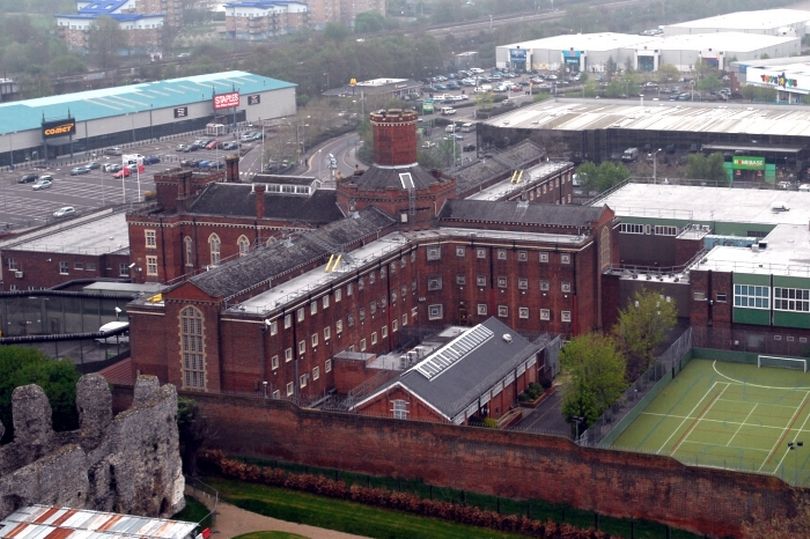Property agents have given Thames Tap their views on the complexities over redevelopment of the Reading Gaol site after the council failed in its bid to buy it.
But any development is likely to be complex. The Grade ll-listed building with its Oscar Wilde fame, is built on part of Reading Abbey, a Scheduled Ancient Monument and sits on the site of the Lady Chapel of the Abbey church and the Abbey infirmary and cemetery.
Fiona Brownfoot, director at Hicks Baker, said it would have been difficult for the council to justify the cost of buying the gaol and a wealthy benefactor would be required to make the desired cultural centre viable.
She added: “If there’s no one around to be indulgent with it – to let that be what it is used for – then there has to be a commercial use.”
Ms Brownfoot argued that while developers are routinely criticised for seeking to make profits, they face considerable risks and the gaol site posed many unusual ones including the possibility of significant heritage discoveries underground.
She added: “If you are a developer there are a lot of easier things to spend your money on.”
Haslams estate agent managing director Steve Woodford told Thames Tap: “For me it needs to be mixed use; some residential, maybe retail, definitely arts and culture. I know that’s what the council wanted. But it’s such a specialist project, it’s a difficult one.”
He said the conversion of a former prison to a Malmaison hotel in Oxford was an idea unlikely to be followed at Reading.
He went on: “This doesn’t convert that well. It is listed and it’s very unlikely to have residential in the main prison. It probably needs another building like Verto (a residential tower in King’s Road) to give it balance.”
Mr Woodford added: “We acted for a couple of clients, looking to make bids, but they couldn’t see any value in it. It would be expensive to renovate, it’s listed and there’s the whole archaeological issue. It will a brave person who takes it on.”
Vail Williams partner David Barden said high land values for both commercial and residential land in Reading will be a major influence on the site’s commerciality. Any developer, he warned, would need to be creative in the planning process.
But he said: “It could potentially transform that side of the town centre. With the former Homebase and Toys R Us site opposite, that side of Reading is going to change dramatically in the next three to five years.
“It’s a very unique site and it’s not without its own challenges but it is a fantastic opportunity to transform the whole eastern edge of the town centre.”
But Mr Barden said the height of any new development could be an issue because of its the closeness to the Abbey Ruins.
In 2000 Argent was refused permission for a tall tower on the current site of Forbury Square, due to its close proximity to the ruins.
The complexities however, said Mr Barden, could lead to changes in the ultimate direction of development.
He added: “It could be an interesting planning process in terms of whether it is successful first time or if there are several revisions.
“Station Hill went through several revisions before its success. Will we see the same as that? Will there be several revisions before it comes through? Because of the uniqueness of the site, the planners may have a different view from what the ultimate purchaser wants to see from the site.”
Friends of Reading Abbey (FORA) wants any new development at Reading Gaol to be sympathetic to both the prison and the Abbey Ruins and says the developer should fund archaeological work on the site.
© Thames Tap No 206 (powered by ukpropertyforums.com)















I’m not sure why we as a nation get so dewey eyed about buildings just because they are old. Reading Gaol isn’t an attractive building and although someone famous was once incarcerated there, doesn’t contribute to the value it adds to the urban fabric of Reading. Oscar Wilde’s contribution to both literature or the national psyche hardly requires this edifice to commemorate it. In such an important site with such close proximity to the Abbey ruins would it not be far better to encourage development of a new quarter better suited to encompassing the wide range of uses including residential, commercial and cultural that the town needs rather than trying to shoehorn them in to a structure that would inevitably end up producing a compromise at every level?
I concur with the previous comment. Funds are limited. Considerable amounts of money would have to be taken away from ALL other Arts projects in the town in the attempt to run an Arts center at this site, for instance South Street and Rising Sun. It makes more sense to integrate arts facilities into new developments that are already happening.
People seem to be forgetting that this Gaol building represents historical vandalism, human rights abuse and oppression of the poor.
It is a dark spot, a blight. It should be cleared away to allow light back into the area.
It seems unlikely that Oscar Wilde would have wished to retain this building. He wrote to draw attention to the appalling conditions within it, not to romanticise the place.
Last year was the 75th anniversary of the UN charter. But the imposition of solitary confinement was integral to the design philosophy and construction of the gaol from the outset. Even the prison Chapel was fitted with dividers so that the unfortunate prisoners were prevented from catching sight of one another.
Oscar Wilde recognised that it was almost exclusively poor people who ended up in the gaol. They were being punished for being poor, and in some cases, for being children. The gaol was just one part of a social system stacked against them.
The present building is not the original one. When they started the previous Georgian prison they dug through parts of the Abbey that we are nowadays striving hard to preserve, possibly discarding the very bones of Henry I.
Its a sorry history, nothing to celebrate and surely time for a fresh start.
Of course the bricks themselves are not to blame. They could be taken away and recycled in creative ways.